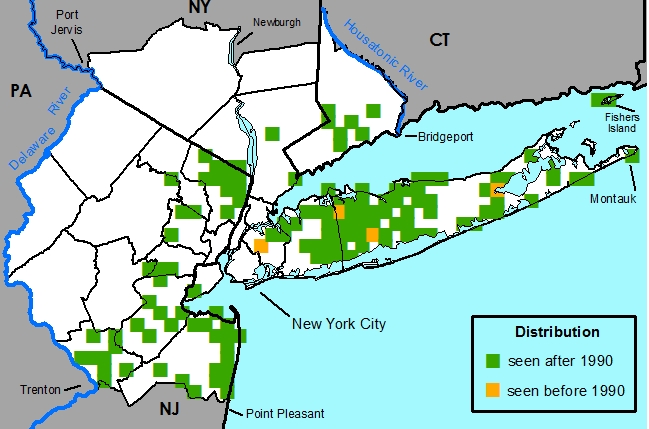Ilex crenata Thunb. - Japanese Holly,Boxleaf Holly
Common Names
Japanese Holly,Boxleaf HollyField Identification
Evergreen shrub with alternate, small, somewhat glossy, dark olive green leaves with mostly entire margins and small, black fruits on female specimens; sometimes confused with Buxus (Boxwood) species.Food uses
Disclaimer: The information provided here is for reference and historical use. We do not recommend nor do we condone the use of this species for food purposes without first consulting a physician.Medicinal uses
Disclaimer: The information provided here is for reference and historical use. We do not recommend nor do we condone the use of this species for medicinal purposes without first consulting a physician.Other uses
(Galle, 1997)Japanese holly has been reported as a cultivated plant in Japanese literature for several centuries and today is still widely used as an ornamental worldwide with over 150 cultivars selected to date.
Poisonous properties
Disclaimer: The information provided here is for reference and historical use. If you believe you have been poisoned, please contact the Poison Control Office near you (look for the number in the front of the phone book).
Ilex fruit and leaves contain an array of potential toxins that can cause moderate to severe nausea, vomiting, diarrhea, and rarely narcosis. Death is unlikely.
Nomenclature
Ilex crenata Thunb., Fl. Jap. 78. 1784.
Celastrus adenophylla Miq., Ann. Mus. Lugd.-Bat. 2: 85. (Prol. Fl. Jap. 17). 1865.
Ilex crenata var. typica f. genuina Loes., Monogr. Aquifol. 1: 201, t. 5, fig. 2. 1901.
TYPE: unknown
Description
HABIT Perennial, evergreen, phanerophytic, shrub, diclinous and dioecious, 1-5 m tall, extremely variable in size and shape.
STEMS Main stems ascending or erect, gray, round. Bark smooth, gray, not exfoliating. Branches erect or ascending or horizontal. Twigs gray, not odoriferous, terete, 2-3 mm in diameter, smooth, with moderately dense short and unbranched erect hairs distributed throughout. Pith white and round; nodal diaphragm absent. Sap translucent.
BUDS Terminal and axillary, scattered along stem; bud scales imbricate.
LEAVES Alternate, simple, spiral, 1 per node, spaced somewhat evenly along and divergent from stem. Stipules present, lateral, scale-like, minute, caduceus, dropping shortly after buds open. Leaves petiolate; petioles terete, 0.2-0.3 cm long, with short and unbranched erect hairs, moderately dense, distributed throughout. Not glabrescent, eglandular. Leaf blades: elliptic or ovate or obovate, bilaterally symmetric, 1-3 cm long, 0.7-1.7 cm wide, coriaceous, base acute or obtuse, margin crenate, 6-10 small teeth per side, apex acute or obtuse. Abaxial surface yellowish green, glabrous, eglandular; adaxial surface dark yellowish green or dark green, glabrous, eglandular.
INFLORESCENCES Unisexual, axillary cymes.
FEMALE FLOWERS Sepals and petals readily distinguishable from one another, 4-merous, 3-4 mm long. Calyx actinomorphic, persistent. Sepals 4. Corolla actinomorphic, deciduous, abaxial and adaxial surfaces white, 3-4 mm long. Petals 4. Gynoecium syncarpous. Style and stigma 1, stigma capitate. Ovary superior. Placentation axile. Androecium abortive, rudimentary, and sterile.
MALE FLOWERS Peduncle present. Male flowers 1.5-2 mm long. Calyx actinomorphic. Corolla actinomorphic, deciduous, white, 1.5-2 mm long. Petals 4, glabrous, eglandular. Filaments free, eglandular. Gynoecium vestigial.
FRUITS Drupe, black,(rarely yellow: f. watanabeana) globose, 5-8 mm long, 5-8 mm wide, glabrous, eglandular.
SEEDS 4,dark gray, broadly oval to almost circular in outline; trigonal to nearly circular in cross section, 3.7-5.2 mm long, 2.6-3.7 mm wide, eglandular, with considerable variation in size and shape.
Habitat
Mesic to moist woods, usually in well-drained, acidic soil.Distribution
Indigenous to China, Japan, Korea, Russia (Kuril Islands and Sakhalin Island), Taiwan, Philippines (f. luzonica); also I. crenata var. thompsonii (Hooker f.) Loesn. and I. crenata var. hachijoensis Nakai from the Himalayas (Bhutan, India, Nepal). Naturalizing in the eastern United States.
United States -- Confirmed escaping in CT, NJ, NY, OH, VA and probably expected to be found in other states along the eastern seaboard.
New York Metropolitan Region -- Nonnative, found escaping from cultivation, mainly on the coastal plain and Long Island.
